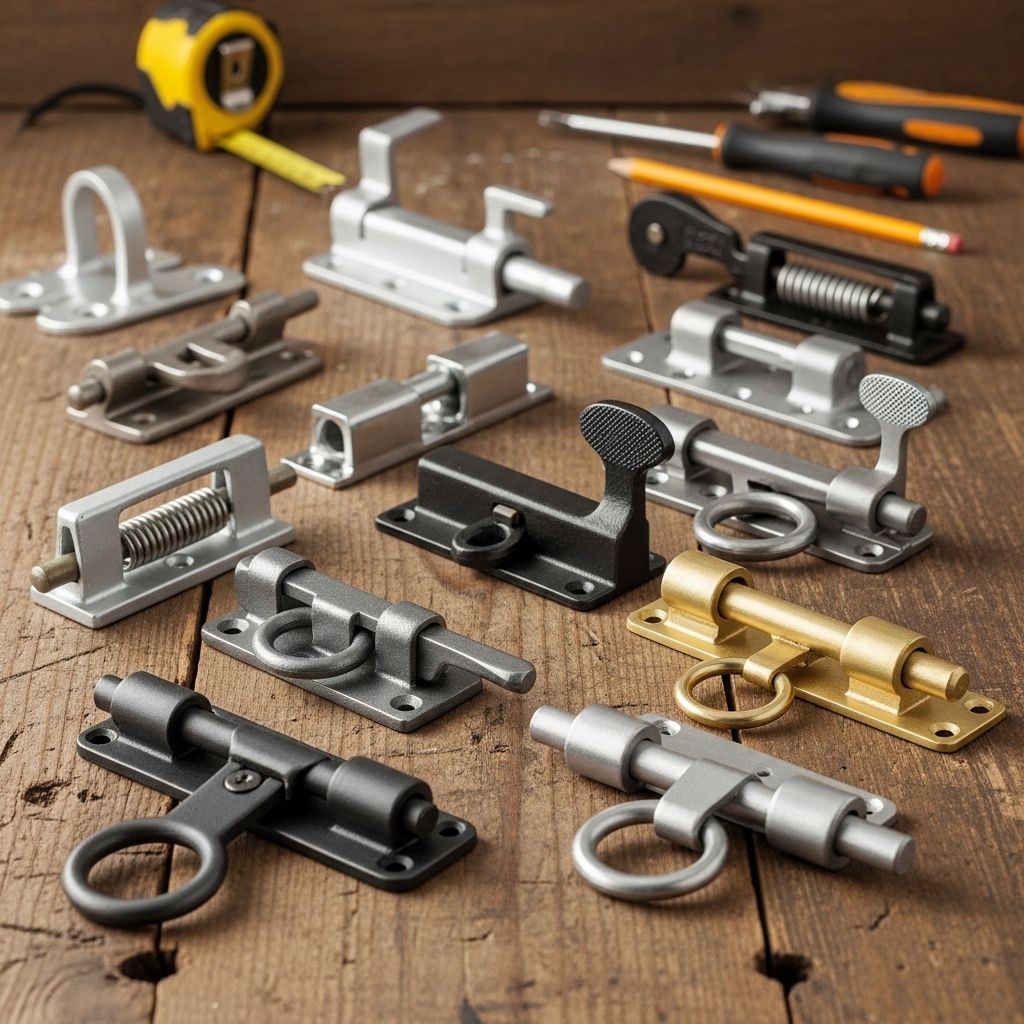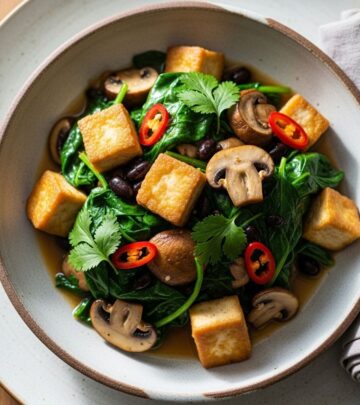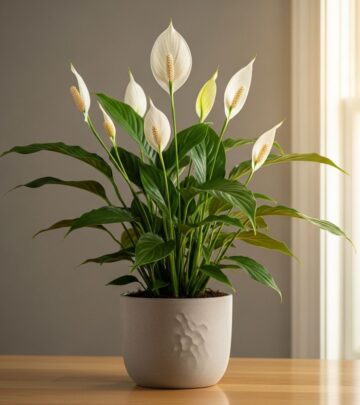Hardware 101: The Complete Guide to Gate Latches—Types, Styles, and Uses
The right hardware elevates entryways with unmatched durability and seamless operation.

Image: HearthJunction Design Team
Hardware 101: The Complete Guide to Gate Latches
Gate latches are an essential component of any outdoor or garden gate, providing both function and style. While often overlooked, their design, mechanism, and durability are crucial to both privacy and curb appeal. In this guide, we’ll explore the fundamental types of gate latches, their unique features, lockability options, and tips for choosing the right hardware for your project.
Table of Contents
- Why Gate Latch Choice Matters
- Types of Gate Latches
- Thumb Latches
- Ring Latches
- Lever Latches
- Bolt Latches
- Latch Lockability
- Style and Material Considerations
- Choosing the Right Latch for Your Gate
- FAQ
Why Gate Latch Choice Matters
A well-chosen gate latch serves as a finishing touch on gates and fences, ensuring that garden entrances are safe, secure, and easy to use. The right latch must withstand weather, frequent use, and blend harmoniously with the gate’s material and design—a functional detail that quietly elevates your exterior.
- Security: Protects your garden and home’s boundaries.
- Ease of Use: Allows smooth passage without fussy mechanisms.
- Curb Appeal: Complements the gate and surrounding architecture, subtly enhancing your garden’s aesthetic.
Let’s examine the four main types of gate latches you’re likely to encounter.
Types of Gate Latches
Gate latches typically come in four primary styles: thumb latches, ring latches, lever latches, and bolt latches. Each offers slightly different mechanisms, advantages, and design details. Here’s a quick overview:
| Type | Operation | Appearance | Typical Use | Lockable? |
|---|---|---|---|---|
| Thumb Latch | Push thumb plate, lifts latch arm from other side | Decorative thumb plate and bar | Double-sided, in-swinging gates | Sometimes |
| Ring Latch | Twist ring, retracts bar from inside or outside | Circular or oval rings, ornamental | Double-sided, traditional gates | Yes, with padlock |
| Lever Latch | Lift or push lever, moves bar | Sleek handle shapes | Modern, contemporary gates | Sometimes |
| Bolt Latch | Slide bolt into catch | Straightforward, utilitarian | One-sided, side gates, sheds | Yes, with padlock or integral lock |
Thumb Latches
Thumb latches are a classic and decorative latch style, especially common on traditional garden gates. Often cast from bronze, iron, or other sturdy materials, they’re both functional and ornamental.
- Design & Mechanism: The outside of the gate features a plate with a thumb depressor. When you push the thumb piece, a latch arm on the opposite side lifts, releasing the gate.
- Double-Sided Use: Thumb latches are usually operable from both sides, ideal for gates that swing inward.
- Self-Closing: Many thumb latches are designed so the latch arm naturally falls into its catch, making them user-friendly and reliable.
- Lockable Options: Some models come with lockable mechanisms for added security.
Example: A traditional cast bronze thumb latch will fit gates between 1.75″ and 2″ thick and often features an antique or hand-forged appearance—perfect for period gardens.
Ring Latches
Ring latches are highly recognizable, featuring a ring (or sometimes an oval) on both sides of the gate. The ring is twisted to rotate a spindle that pulls open the latch bar. They exude historic charm and look right at home on cottage or English-style garden gates.
- Double-Sided Operation: Openable from either side by turning the ring.
- Ornamental Appeal: Rings themselves can be simple, hammered, or intricately detailed.
- Lockability: Many ring latches allow for simple locking by accommodating a padlock through the latch bar.
They are a great pick for gates where equal access is needed from both directions and aesthetic appeal is paramount.
Lever Latches
Lever latches bring a more contemporary look with streamlined handles or bars. The lever is lifted or pressed to operate the mechanism, retracting a latch bar from its catch.
- Modern Silhouette: Often with minimal hardware visible on the gate face, lever latches can be rectangular, curved, or linear.
- Material Range: Available in stainless steel, bronze, and other weather-resistant metals.
- Operation: Levers can be single or double-sided, depending on the model. Some levers return to their original position thanks to spring mechanisms.
- Lockability: Certain models come integrated with a lock or allow padlocking.
Lever latches are much loved for their modern sensibility and ergonomic function, suited to gates in updated or architecturally distinctive gardens.
Bolt Latches
Bolt latches are the workhorses of the latch world: straightforward, cost-effective, and reliable. Typically, this is a sliding bolt that engages with a catch or a hasp on the gate post.
- One-Sided Use: Most bolt latches operate only from inside the gate, which is perfect for utility gates, side alleys, or sheds.
- Material: Commonly found in steel, stainless steel, brass, or bronze, their simplicity never goes out of style.
- Lockability: Bolts are almost always lockable with either an integrated locking mechanism or a hole for a padlock.
- Budget-Friendly: A basic galvanized bolt latch remains one of the most affordable latching solutions available.
Bolt latches may be less visually ornate but make up for it with sheer practicality and toughness.
Popular Bolt Latch Design: Slide Bolt
- Easy to install and operate
- Often available in a range of finishes — from matte black to rustic bronze
- Favored for utility gates or enclosures where appearance is less of a concern
Latch Lockability
Security needs vary. Some garden gates are merely decorative, while others guard prized vegetables or provide a first defense for home security. Lockability is an important consideration when selecting a latch. Here are the main lockability options:
- Non-Lockable: Primarily found in basic thumb or sliding bar latches, these simply secure the gate and keep it closed.
- Lockable With Padlock: Many ring and bolt latches feature a catch or hasp where a traditional padlock can be added for extra security.
- Integrated Locks: Some levers and high-end latches incorporate built-in keyed locks, blending convenience and style.
- Privacy Latches: Special latches designed to be locked from inside (and optionally with privacy thumb-turns or levers).
When evaluating a latch for lockability, consider both the security needs of your garden—and the aesthetics of any visible locks and hardware.
Style and Material Considerations
The hardware you select will play a role in how your gate looks and how long it lasts. Key factors to consider:
- Material: Latches come in cast bronze, stainless steel, wrought iron, galvanized steel, and more. Each offers unique durability and maintenance profiles.
- Finish: Choose from matte black, brushed metal, polished brass, antiqued bronze, or even powder-coated colors to harmonize with your gate and landscape style.
- Ornamentation: Hammered, cast, or minimalist, the hardware can be a focal point or fade blissfully into the background.
- Hardware Size & Scale: Pair the latch size to the gate thickness and height for proportional balance and correct fit.
Always consider local weather when choosing materials—coastal and wet climates demand rust-resistant options, while historic properties may call for hand-forged or period-appropriate hardware.
Choosing the Right Gate Latch: Practical Tips
- Assess Gate Thickness: Not all latches fit all gates. Measure your gate before buying; many latches specify an optimal thickness range.
- Accessibility: Double-sided latches offer inside and outside access—essential if you want to walk through from either side.
- Security: Does the gate protect children, animals, or valuables? Select lockable latches accordingly.
- Gate Swing Direction: Some latches are optimized for in-swinging or out-swinging doors. Verify before installing.
- Style Consistency: Match latch design to your gate’s era, architecture, and fence hardware for seamless curb appeal.
- Maintenance Needs: Consider how much (or little) time you want to spend on maintaining exposed metalwork in your climate.
Frequently Asked Questions (FAQs)
Q: Can I install a gate latch myself or should I hire a professional?
A: Most gate latch types are designed for straightforward installation with handheld tools. However, for heavy gates, integrated locks, or complex double-sided latches, professional installation may ensure perfect alignment and function.
Q: What maintenance does a gate latch require?
A: Regularly check hardware for rust or corrosion, especially in humid or coastal locales. An annual application of lubricant or protective wax keeps moving parts smooth. Touch up paint or finish as needed to prolong lifespan.
Q: Are all gate latches weatherproof?
A: Not all latches are created equal. Stainless steel, powder-coated, and bronze latches are highly weather-resistant. Assess the finish and material before buying, especially for gates exposed to heavy rain or salty air.
Q: How do I choose the right latch for a privacy or pool gate?
A: For privacy, select a lockable option with a key or a padlock capability. Pool gates often require self-closing and self-latching hardware by code—check local regulations for safety compliance before choosing.
Q: Can I retrofit an existing gate with a new latch?
A: Yes, most gates can be upgraded with minimal work. Measure existing holes, ensure compatibility, and patch any unused mounting points for a clean look.
Explore More
- For more gate hardware inspiration, check out “10 Easy Pieces: Garden Gate Latches.”
- Discover locks and hasps for additional security in “10 Easy Pieces: Lockable Hasp Gate Latches.”
- For modern aesthetics, see “5 Favorites: Modern Wooden Garden Gates.”
- Get expert advice on gate and fence design in “Hardscaping 101: Fences & Gates.”
References
- https://www.gardenista.com/posts/hardware-101-gate-latches-style-guide/
- https://www.gardenista.com/posts/10-easy-pieces-garden-gate-latches/
- https://www.gardenista.com/posts/made-in-the-usa-the-ultimate-gate-latch/
- https://www.gardenista.com/posts/10-easy-pieces-hasp-slide-lock-gate-latches/
- https://www.gardenista.com/garden-design-101/hardscape/fences-gates-design-guide/
Read full bio of Srija Burman












